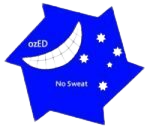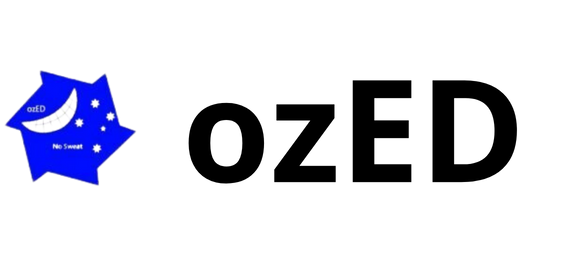What is Ectodermal Dysplasia?
Ectodermal Dysplasia is a diverse group of genetic disorders that involve defects of the hair, nails, teeth, skin and glands. Other parts of the body, such as the eyes or throat, may be affected as well.
The term ectoderm refers to some of the earliest cells found in a baby. Very early in development. a baby at this stage the embryo, consists of 3 types of cell – endoderm, mesoderm and ectoderm. The cells of the ectoderm go on to form teeth, hair, nails and sweat glands as well as a few other types of cells. The term dysplasia means a change from the usual pattern of growth. Therefore, the term Ectodermal Dysplasia is a descriptive term meaning an individual has changes in the structure of parts of the body that have developed from the ectoderm.
Each ectodermal dysplasia has its own combination of symptoms. Two or more of the key features must function abnormally to be defined as an ectodermal dysplasia. How the key feature is abnormal will vary depending on the syndrome.
- Fingernails and toenails may be thick, abnormally shaped, discoloured, ridged, slow-growing, or brittle. Sometimes nails may be absent. Cuticles may be prone to infection.
- Teeth may not appear in babies or may come through pointed / conical shaped.
- Overheating due to lack of sweating or excessive sweating
- Dry brittle hair & dry skin prone to eczema
- Blocked nose / ear aches
- Respiratory issues
Types of Ectodermal Dysplasia
Over the years there have been over 200 different types of Ectodermal Dysplasia identified based on the combination of symptoms carried by each individual. At the end of 2022 a research paper titled Molecular Pathway-Based Classification of Ectodermal Dysplasias: First Five-Yearly Update was published to provide an update on the reclassification of the types of Ectodermal Dysplasia which will assist with future diagnosis, reaesrch and reporting of the condition.
The following syndromes / types of ED represent the largest groups of people in Australia who are known to ozED:
- Ankyloblepharon-Ectodermal Defects-Cleft Lip/Palate (AEC)
- Clouston Syndrome
- Ectrodactyly, Ectodermal Dysplasia, and Cleft Lip/Palate (EEC) Syndrome 1
- Hypohidrotic Ectodermal Dysplasia, Autosomal Dominant
- Hypohidrotic Ectodermal Dysplasia, Autosomal Recessive
- Hypohidrotic Ectodermal Dysplasia, X-Linked
- IFAP Syndrome With or Without Bresheck Syndrome
- Incontinentia Pigmenti
- TSpear Ectodermal dysplasia 14, hair/tooth type with or without hypohidrosis (ECTD14)
The updated reclassified list of types of Ectodermal Dysplasia and their associated symptoms can be viewed on the table contained within the research paper noted above.
It is possible that a person could have a combination of symptoms that is unique to them and has not yet been described in the medical literature. Or, the person is just told they are affected by ectodermal dysplasia. The doctor might not know enough about the different types to give a specific diagnosis. Or, the person was diagnosed at a time when we didn’t know as much about a particular type.
In some types, teeth may be missing and nails may be defective, while in another type there may be missing teeth, inability to sweat, and sparse hair. Still another may have hearing loss and defects of the enamel of the teeth. Each combination of abnormalities may be a distinct ectodermal dysplasia and will have a unique name.
Each type of Ectodermal Dysplasia usually involves a different combination of symptoms, which can range from mild to severe, such as:
- Absence or abnormality of hair growth.
- Absence or malformation of some or all teeth.
- Impairment in the development of many glands, especially sweat glands, but also salivary glands (make saliva), lacrimal glands (make tears), mucous glands and the breasts.
- Lack of the ability to sweat causing overheating.
- Too little production of tears and other protective secretions of the eyes. This can make them sensitive and even painful.
- Reduced production of mucus in the airways, that leads to chest infections and – in those exposed too often to smoke or dust – to chronic lung damage (emphysema).
- Impairment or loss of hearing.
- Nasal blockage due to a build-up of secretions.
- Frequent infections due to immune system deficiencies and, in some cases, the inability to keep bacteria from entering the body through cracked or eroded skin.
- Less effective barrier properties of the skin, airways and gut leading to infections and to allergies (e.g. asthma, eczema and hay-fever).
- Respiratory problems: not only asthma and chest infections but also, in those who smoke or are exposed to dust, a severe form of chronic chest disease (may be diagnosed as emphysema or as pneumoconiosis).
- Absence or malformation of some fingers or toes.
- Cleft lip and/or palate.
- Irregular skin pigmentation.
In addition to the above individuals affected by Ectodermal Dysplasia may have:
- Sensitivity to light.
- A lack of breast development.
- Psychological challenges due to changes in physical appearance.
Individuals affected by Ectodermal Dysplasia may face a lifetime of special needs. Including:
- Dentures at a young age with frequent adjustments and replacements.
- Osseointegrated dental implants.
- Special diets to meet dental/nutritional needs.
- Air-conditioned environments.
- Wigs to conceal the lack of hair and scalp conditions.
- Creams or devices to protect from direct sunlight.
- Respiratory therapies for asthma and infections.
Ectodermal dysplasia usually occurs because of a change in an individual’s DNA. The individual with ectodermal dysplasia may be the first person in the family to have the genetic change or the change, may have been inherited from a family member. Not all ectodermal dysplasia’s are passed on in families in the same way.
It is important to remember that not all individuals affected by the Ectodermal Dysplasia will have physical features that fit the description of a specific syndrome. All individuals are different and there may be a great deal of variation in the physical appearance between one affected person to the next with the same type of Ectodermal Dysplasia even within the same family. We do not yet understand all the causes of Ectodermal Dysplasia and so it is conceivable for a person to have a type of Ectodermal Dysplasia that has not yet been described. Nonetheless, the Ectodermal Dysplasia’s share certain features, an understanding of which makes it possible to appreciate the ramifications for most affected individuals and allows everyone involved to respond appropriately to the individual’s needs.
Ectodermal Dysplasia Specialists
As Ectodermal Dysplasia has so many different symptoms and combination of symptoms there is no 1 specialist that treats ED patients. Those with ED will see a multitude of specialists during life to treat and manage their condition.
General Health
- GP
- Paediatrician
Genetics
- Geneticist
- Genetics Counsellor
Dental
- Dentist
- Hygienist
- Prosthodontist
- Orthodontist
- Periodontist
Eyes
- Ophthalmologist
- Optometrist
Ears / Nose / Throat
- ENT
- Audiologist
Sweat Glands, Skin & Nails
- Dermatologist
Hair
- Trichologist
Hands & Feet
- Orthopaedic Surgeon
- Podiatrist
Kidneys & Bladder
- Urologist
Mental Health
- Counsellor
- Psychologist
Government Support
Yes. you are entitled to a carers allowance with Centrelink when you or your child are diagnosed with Ectodermal Dysplasia (ED). Letters from your paediatrician support a diagnosis as Ectodermal Dysplasia is a recognised disability.
Carer Allowance – https://www.servicesaustralia.gov.au/carer-allowance
Yes, people with Ectodermal Dysplasia are eligible for cover under Medicare.
See the below links for more details:
Medicare Benefit Schedule (MBS) Category 7: Cleft and Craniofacial Services
Unfortunately, this is a grey area & there is no clear cut answer to the question. Each individual’s specific needs for assistance are different & the NDIS program does not follow 1 set of rules. We can only suggest speaking with your GP / Paediatrician & applying to the NDIS office to see if you are eligible. We have in our support group some families that have been successful & won’t mind sharing their stories & would be willing to provide assistance.
NDIS – https://www.ndis.gov.au/
Ectodermal Dysplasia Around the World
ozED is a member of the Ectodermal Dysplasia International Network (EDIN). The EDIN has been created to bring together the International ED Community Leaders to share our worldwide knowledge and experience. The EDIN meets every 18 months to work together in brining awareness of Ectodermal Dysplasia as well as to share information and research project news worldwide.
ozED works alongside our international counterparts to bring knowledge, research, and experience from around the world back to our members. If you are based outside of Australia and interested in connecting with a group in your country or region, please see relevant links below.

